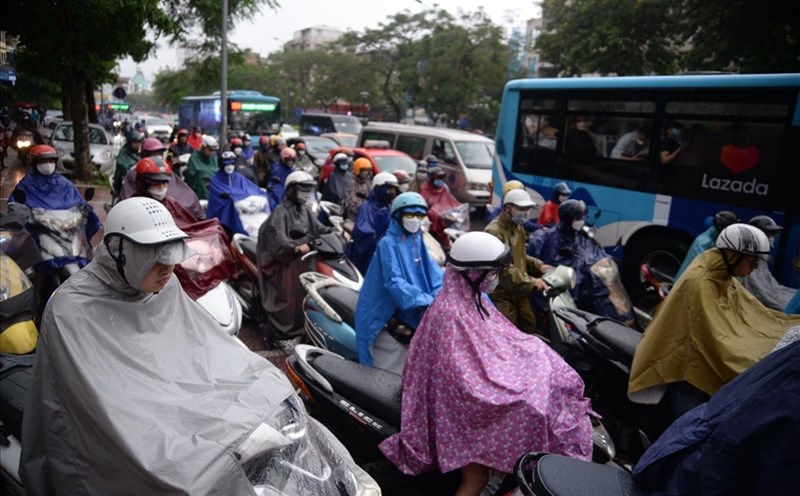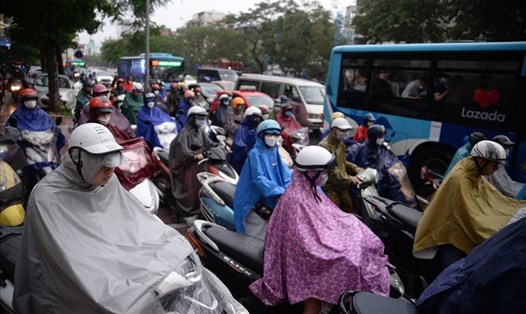Creating momentum to promote a carbon-free economy
The Department of Hydrometeorology (Ministry of Agriculture and Environment) has coordinated with the United Nations Development Program (UNDP) and the Norwegian Embassy to publish a report "Detailed assessment of the potential of wind resources in coastal areas (up to 6 nautical miles) and offshore areas in Vietnam".
At the report announcement ceremony, Mr. Hoang Duc Cuong - Deputy Director of the Department of Hydrometeorology - said that Vietnam is located in a strong and stable Asian monsoon area, so the potential for wind energy is considered abundant; this energy source will play a big role in implementing Vietnam's commitments on climate change, promoting a carbon-free economy.
However, natural disasters caused by the sea are also very complicated, which can significantly affect the stability of the operation and exploitation of this renewable energy source.
"Therefore, objectively assessing the potential for marine wind energy, taking into account the impact and risks from extreme weather phenomena, is very necessary and meaningful," Mr. Cuong emphasized.
The biggest goal of the report is to build a set of high-resolution sea data climate data (3x3 km), based on a series of data that lasts for 30 years (1991-2020), thereby determining the exact potential of offshore wind power development techniques. This is an important data platform to support the planning, investment and sustainable development of renewable energy industry, especially in the context of VIII Electrical Planning has officially set a clear goal of the proportion of renewable energy in the national power source structure.
Based on the WRF model configuration for Vietnam's waters, reporting the potential of wind electricity engineering throughout the exclusive economic zone (EEZ) up to 1,068 GW (at 100m height), in which the southern sea area accounts for nearly 900 GW - more than 5 times the Northern region. This is a far beyond the previous assessment of the World Bank (599 GW) thanks to a wider scope of survey, using satellite data combined with real data at coastal, islands and bio -buoy stations.
Coastal areas (up to 6 nautical miles) are generally easy to access, low infrastructure investment costs also record great technical potential with a total capacity of 57.8 GW. Outstanding potential clusters are concentrated in Bac Lieu - Ca Mau (over 16 GW), Ninh Thuan - Binh Thuan (over 24 GW), while the Northern region only reaches 0.17 GW due to many limited terrain and planning.
Natural disaster risk analysis for wind power development
The report pointed out that Vietnam has outstanding potential for offshore wind resources in the region, which is the basis for developing a large-scale marine wind power industry, contributing to ensuring energy security, developing a green economy and implementing the Net-Zero commitment.
Notably, the report clearly analyzed seasonal fluctuations. Accordingly, the Northeast monsoon will blow strongly from November to March of the following year, creating optimal conditions for offshore wind power exploitation in the North and Central regions.
The southwest monsoon occurs from May to September, mainly affecting the southern sea area, especially the Southwest.
December is usually the month with the highest wind density of the year nationwide, while May and June are usually the period with the lowest wind speed, requiring careful calculation in operating and maintaining the system.
The report also integrates analysis of natural disaster risks that may affect offshore wind power development.
Storms and tropical depressions are most concentrated in the North and Central Central regions, posing risks to turbine structure and safety, especially in August-December.
Extreme winds and high waves often occur during the Northeast monsoon season, which can affect access and maintenance of the wind power system.
Flow and high tide: need to specifically assess each installation location to ensure stable foundation and appropriate design.
The report provides seasonal disaster risk zoning maps and recommends that regions should and should not prioritize development based on the level of impact.











